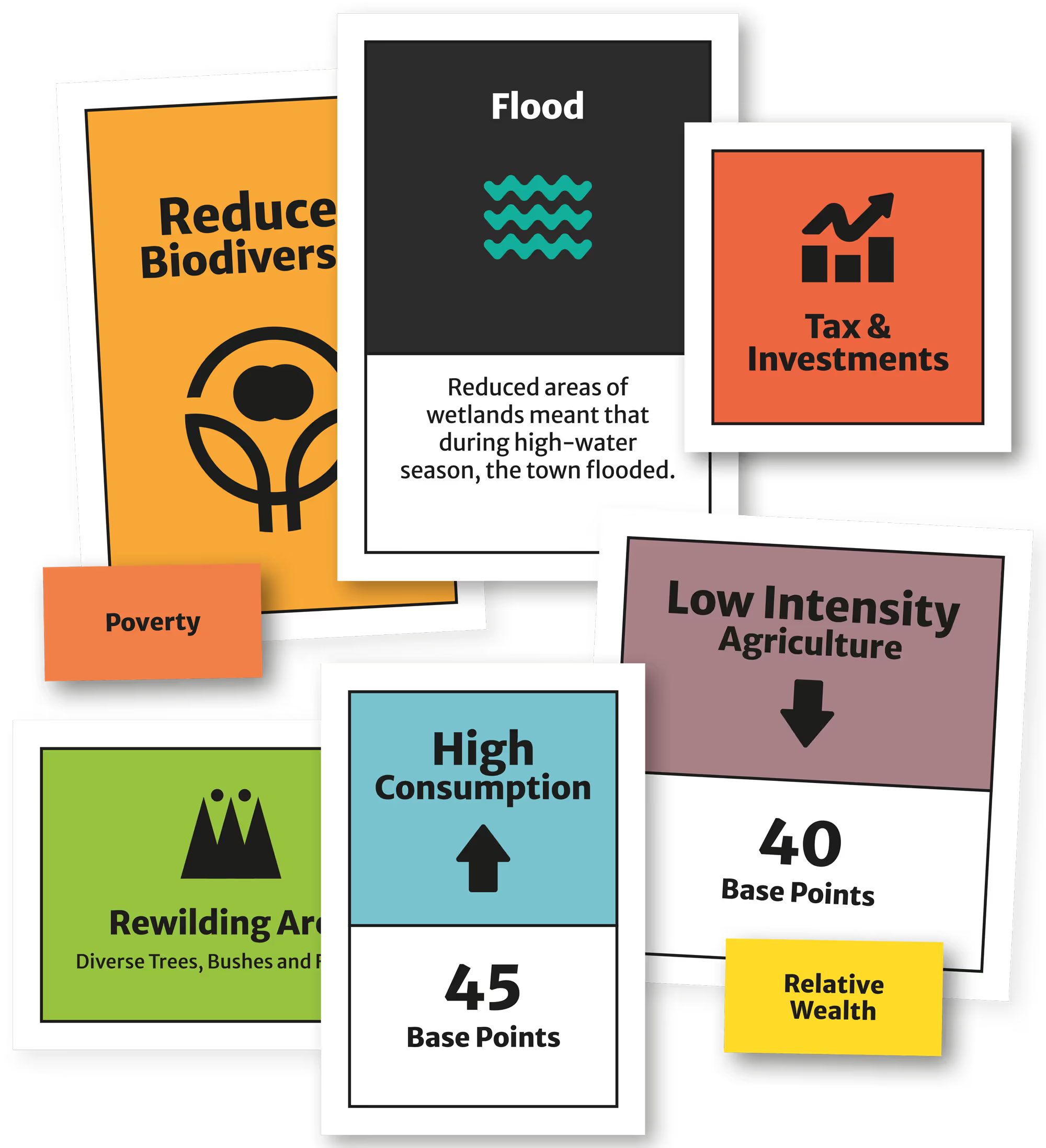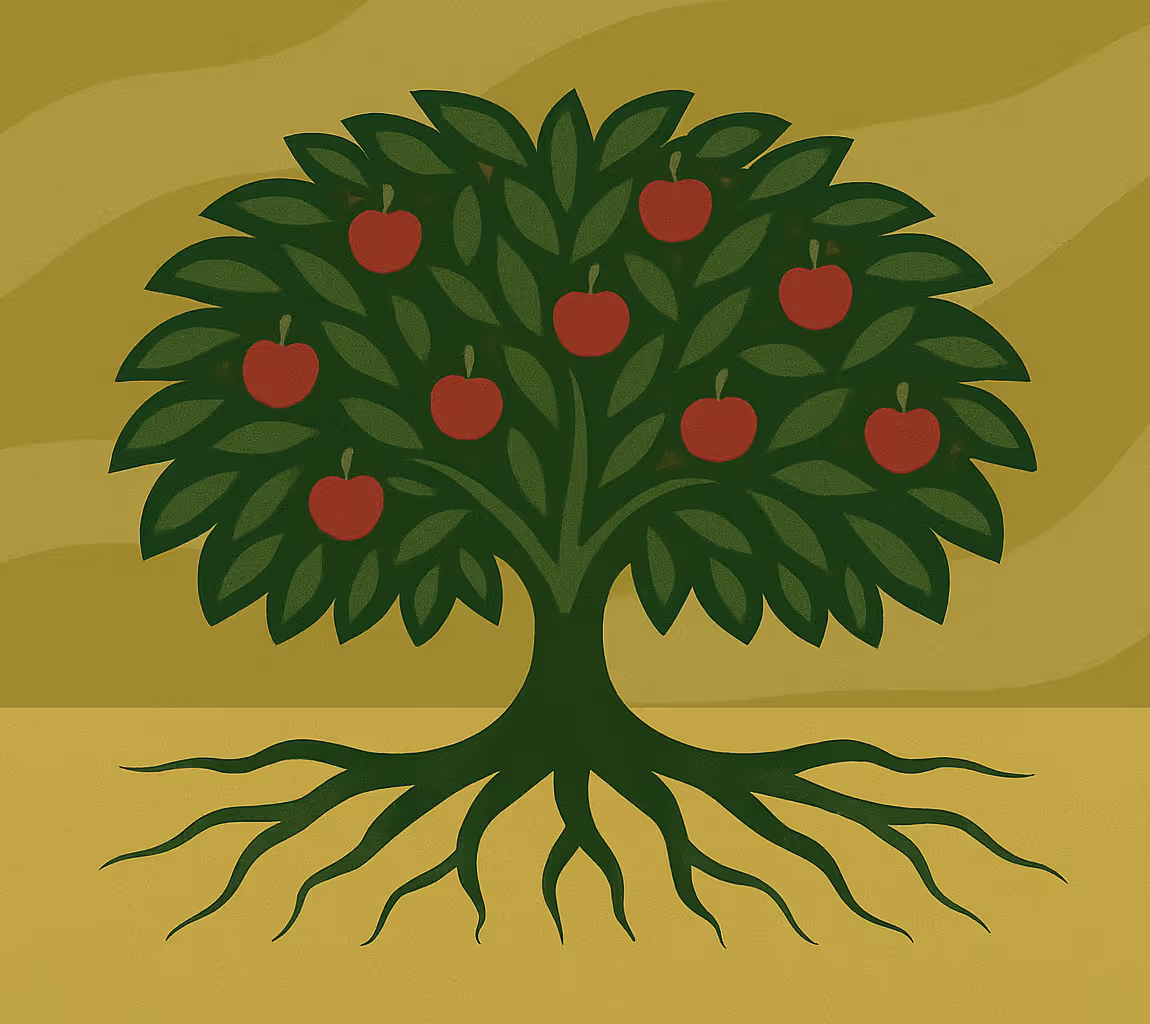What is PATHBREAK?
PATHBREAK is a dynamic collective action game where players work together to balance nature, agriculture, and governance. Playing ss farmers, policymakers, and individuals with diverse backgrounds, needs and interests, you’ll face real-world challenges, protect endangered species, ensure livelihoods and food security, exercise your electoral rights and responsibilities, and navigate political landscapes. But overcoming the dilemmas and breaking the path to a sustainable future is not easy. Can your group manage it? What bold decisions, trade-offs, and collaborations will it take? The future is in your hands, collaborate, strategise, and shape a world where both people and nature can flourish!
PATHBREAK was developed to spark dialogue, inspire collaboration, and help players experience the tough trade-offs and shared responsibilities that shape our world. By stepping into the roles of farmers, policymakers, and simply individuals with diverse backgrounds, needs and interests, players navigate real-world dilemmas, discovering firsthand what it takes to break unsustainable cycles and forge new paths. Through play, we hope to foster a deeper understanding of the complexities at stake and empower people to explore innovative solutions for a more just and resilient future.

In this module Ilkhom Soliev explains how PATHBREAK was designed and used in PLANET4B, in this video he introduces the PLANET4B case study:
In this video Ilkhom Soliev introduces PATHBREAK:
When and Where to Play:
PATHBREAK is particularly suitable any context interested in exploring questions at the intersection of the environment and society, both in formal and non-formal educational settings, stakeholder workshops on biodiversity and food politics, and any group that would like to learn how to overcome complex social dilemmas.
- Suitable for workshops, classrooms, community gatherings, or professional training sessions
- Best played in a quiet, accessible indoor space with tables and chairs arranged so all participants can face the board
- Ideal when participants can remain uninterrupted for the full session
Key Features
Participants:
- Minimum group size: 7 players and a maximum of 14 players, if you have more than 10 people it is necessary to have 2 facilitators
- Suitable for players 13+ years old
Timeframe:
- Learning the Game: The first time you play the game allow 2 to 3 hours preparation time to read the facilitator manual and gather materials
- Setup: 30 minutes
- Session Time: approximately 2.5 to 3 hours
- Game duration: 90 minutes
- Debriefing session: 30 to 60 minutes
Budget:
- This is a low-budget method, as the game is open access and free to download from the PATHBREAK Website
- You will need to budget for printing, game play materials, refreshments, and potentially space hire
Materials Needed:
- Printed game board and role cards (in colour if possible)
- At least 1 Laptop with internet access for the PATHBREAK Game
- Projector or screen for shared display (recommended)
- Spreadsheet provided with the game to track decisions and scores
- Small physical tokens (e.g. coins, buttons, paper markers) for game indicators
- Pre- and post-game survey forms (digital or paper)
- Facilitator manual
- Optional: voice recorder or camera for documentation (with consent)
- Snacks or refreshments
Roles and Responsibilities
PATHBREAK sessions require players and facilitators, both play a key role in shaping the process, during the game and in the reflective space that follows.

Players: in the game players assume roles that reflect different social positions, including both economic and intersectional characteristics. These roles are designed to surface different experiences, such as exclusion from political processes, uneven access to resources, or conflicting values around nature. No specific expertise is required, but participants should be willing to engage with the scenario and contribute to group dialogue. Through decision-making, elections, and community discussions, they experience how individual actions and institutional structures affect biodiversity.
In this video Ilkhom Soliev explains what participants can gain from playing PATHBREAK:
Facilitators are responsible for preparing materials, guiding the game, and creating a safe, inclusive space for experimentation. Facilitators should be able to manage diversity in learning styles, intercultural sensitivity and conflict management, ideally with some experience in teaching situations. The responsibilities of the facilitator are as follows:
- Creating an inclusive atmosphere: Facilitators are responsible for setting the tone of the session, making sure all players feel welcome, comfortable, and respected. This includes introducing the game in an accessible way and encouraging openness to different views and experiences.
- Explaining the rules and guiding the sequence: Clear explanation of the gameplay structure is key to ensuring that players understand the rules, roles, and objectives. Facilitators should be prepared to answer questions and clarify uncertainties as they arise, particularly in the early stages of the game.
- Supporting engagement and participation: During the game, facilitators help maintain momentum and ensure that all players have the opportunity to contribute. This may include gently encouraging quieter voices and managing dominant ones, being aware of group energy and levels of engagement.
- Managing disagreement and emotional responses: Given the game's themes, discussions may become animated or emotional. Facilitators should be ready to navigate moments with care, encouraging players to express themselves while also reminding the group to use respectful and inclusive language.
- Balancing structure and openness: Although the game follows a defined sequence, facilitators should remain attentive to the group’s dynamics and flexible enough to adapt pacing or emphasis if needed. The aim is to support meaningful discussion without losing the flow of gameplay.
- Framing reflection and linking to real-world relevance: After the game, facilitators help players make sense of the experience, drawing out insights and connecting the discussion to broader questions about biodiversity, governance, and social change. This can include prompting critical reflection, linking to participants’ own contexts, and exploring possible actions.
In this video Ilkhom Soliev reflects on facilitating PATHBREAK and the skills needed to guide the process effectively:





















